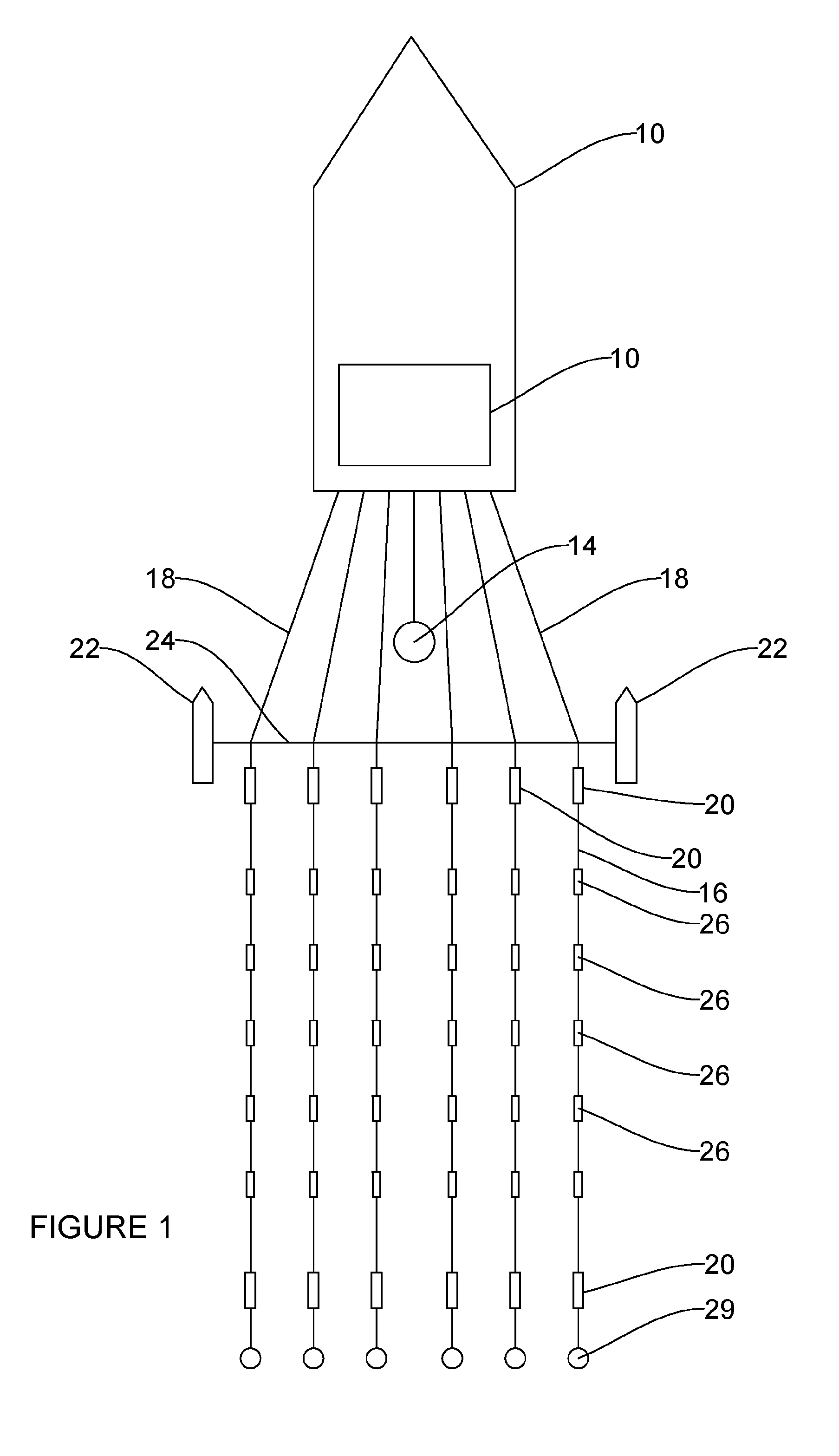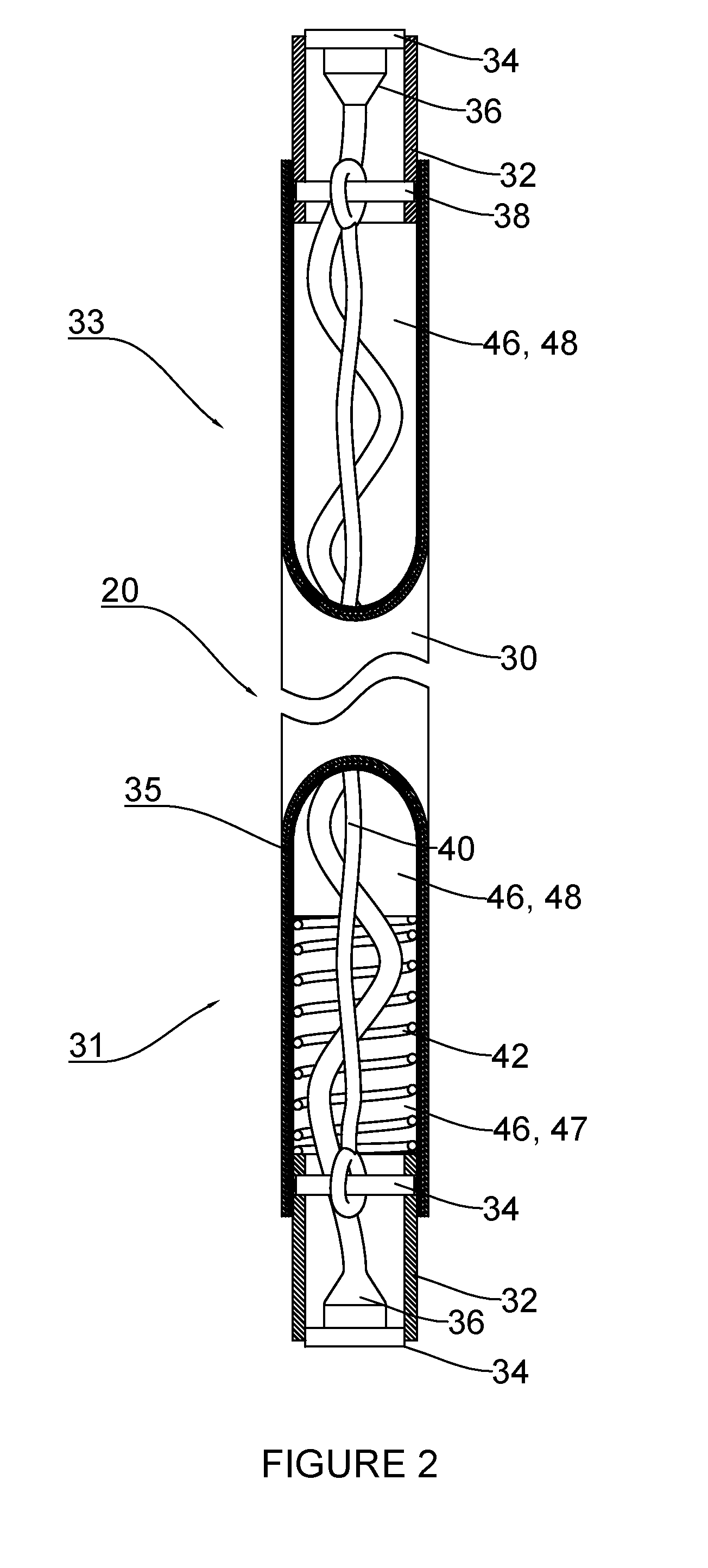Vibration isolation section
a technology of vibration isolation and section, which is applied in the field of vibration isolation sections, can solve the problems of mechanical noise generation, noise that affects the streamer, and type of noise created, and achieve the effect of increasing the attenuation of noise and further attenuation of nois
- Summary
- Abstract
- Description
- Claims
- Application Information
AI Technical Summary
Benefits of technology
Problems solved by technology
Method used
Image
Examples
Embodiment Construction
[0044]It is to be noted where possible features common to the various embodiments illustrated in the drawings are referred to in each drawing by a respective common feature number.
[0045]A marine seismic acquisition system is shown in FIG. 1. The seismic data acquisition system includes a seismic vessel 10 towing a plurality of laterally spaced apart seismic streamers 16 through a body of water such as a lake or the ocean. The seismic vessel 10 typically includes instrumentation thereon collectively called a recording system, shown generally at 12. The recording system 12 may include navigation devices, electrical power supplies, data recording equipment and seismic source actuation equipment of types well known in the art. The data recording equipment (not shown separately for clarity of the illustration) makes recordings, typically indexed with respect to time of actuation of a seismic energy source 14, of signals detected by seismic sensors 26 disposed at spaced apart locations al...
PUM
 Login to View More
Login to View More Abstract
Description
Claims
Application Information
 Login to View More
Login to View More - R&D
- Intellectual Property
- Life Sciences
- Materials
- Tech Scout
- Unparalleled Data Quality
- Higher Quality Content
- 60% Fewer Hallucinations
Browse by: Latest US Patents, China's latest patents, Technical Efficacy Thesaurus, Application Domain, Technology Topic, Popular Technical Reports.
© 2025 PatSnap. All rights reserved.Legal|Privacy policy|Modern Slavery Act Transparency Statement|Sitemap|About US| Contact US: help@patsnap.com



